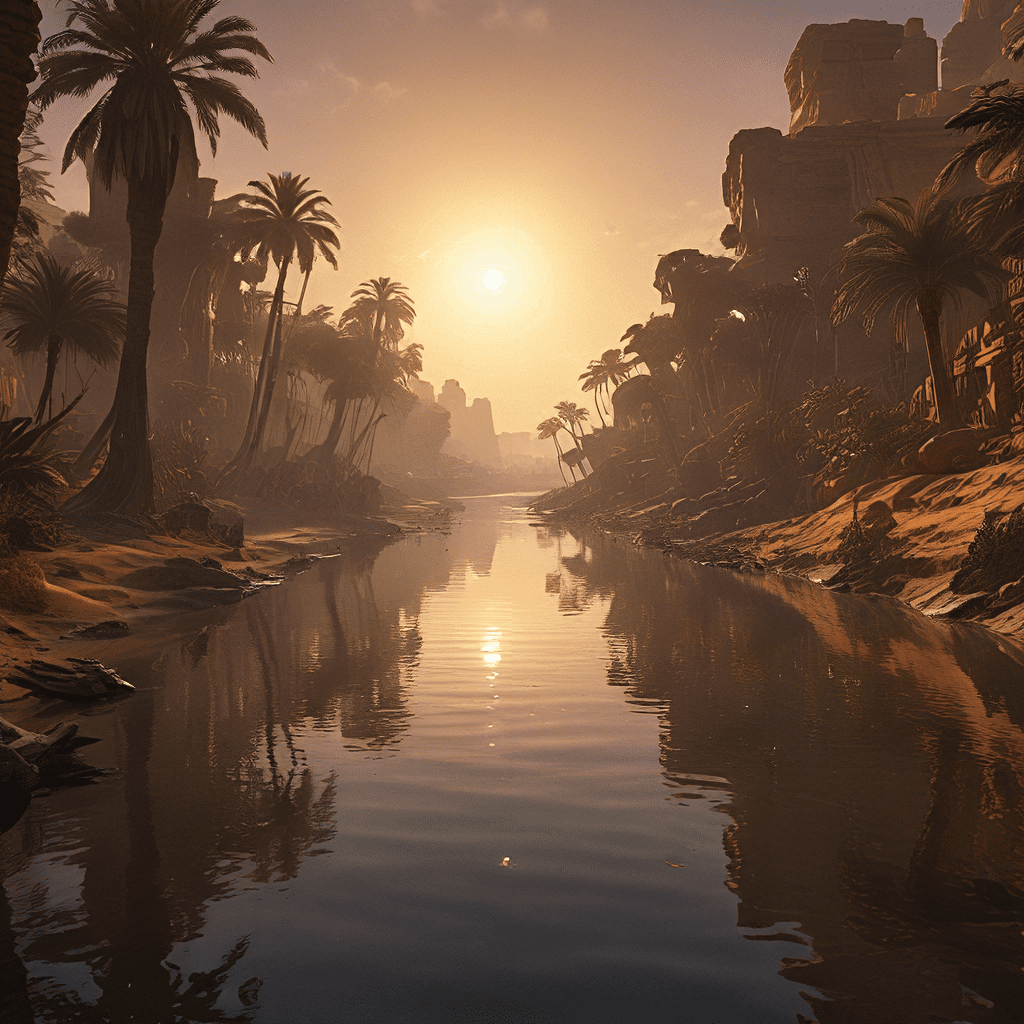1. Introduction: The Ancient Egyptian Belief in the Afterlife
For the ancient Egyptians, life wasn’t just about the here and now. They believed strongly in an afterlife, a journey to a mystical realm known as the “Duat”. This journey was not just about death; it was a chance to be judged and possibly attain eternal life. The concept of “Ma’at” – the principle of cosmic order, justice, and truth – was deeply intertwined with the afterlife. This divine order ensured fairness and guided the Egyptians through their lives and into their final journey.
The sun god Ra, who traversed the sky each day in his solar boat, played a crucial role in the afterlife. His journey symbolized the cycle of life, death, and rebirth. Just as the sun disappeared into the underworld at sunset, so too did the souls of the deceased embark on their own journey into the mysterious Duat.
2. The Underworld: A Labyrinth of Trials
The Duat was a challenging realm, a labyrinth of trials and tribulations that the deceased soul had to navigate. It was a place of darkness, danger, and mythical beings. The journey was fraught with peril, and the deceased had to overcome obstacles and face challenges. They encountered monstrous creatures, like the serpent Apep, who threatened to extinguish the sun and throw the world into chaos.
The “Book of the Dead”, a collection of spells and prayers, served as a guide for the deceased on this perilous journey. It offered protection from evil spirits, provided guidance through the underworld, and ensured a successful passage to the afterlife.
3. The Weighing of the Heart: Facing Judgment
After navigating the perils of the Duat, the deceased soul reached the Hall of Two Truths, where the god Anubis presided over the Weighing of the Heart ceremony. Anubis, the jackal-headed god of embalming and mummification, was responsible for preparing the body for the afterlife. It was believed that the heart held the essence of a person’s soul, reflecting their actions throughout their life.
The heart was weighed against the feather of Ma’at, the symbol of divine order. If the heart was lighter than the feather, the deceased was deemed worthy of entering the afterlife. However, if the heart was found to be heavy with sin, it would be devoured by the monster Ammit, a creature with the head of a crocodile, the paws of a lion, and the hindquarters of a hippopotamus.
4. Osiris: The King of the Underworld
Osiris, the god of the afterlife, ruled over the Duat. His journey to become the king of the underworld is a fascinating story. He was murdered by his brother, Seth, who was consumed by envy. Osiris’ wife, Isis, skillfully reassembled his body, bringing him back to life briefly. However, he was unable to return to the land of the living and became the ruler of the underworld.
Osiris and Isis played vital roles in the afterlife. Osiris judged the souls of the deceased, while Isis helped them through their trials. The process of mummification itself was deeply connected to Osiris, as it was believed to be a symbolic resurrection of the deceased.
5. The Fields of Reeds: The Eternal Afterlife
If a soul passed the judgment of Osiris, they were granted access to the “Fields of Reeds,” a realm of eternal happiness and paradise. It was a place of perfect abundance, where the land was fertile and the water flowed freely. The Egyptians believed that the deceased could enjoy eternal life in this blissful realm, reunited with loved ones.
To reach this paradise, it was essential to live a moral life, upholding the principles of “Ma’at”. By living virtuously, individuals could ensure a smooth transition into the afterlife and gain access to this eternal garden of paradise.
6. The Role of the Pharaoh: The Divine King and the Afterlife
The Pharaoh, the king of Egypt, held a special position in the afterlife. He was considered a divine king, connected to the god Horus, the god of kingship and protection. This connection symbolized the Pharaoh’s responsibility for the well-being of the kingdom and the people’s journey into the afterlife.
Pharaoh’s tomb was an elaborate monument, usually a pyramid, constructed to ensure a safe journey into the afterlife. These immense structures were designed to represent the Pharaoh’s journey as a rising sun god, symbolizing their transformation into a divine being.
7. The Gods and Goddesses
The ancient Egyptian pantheon was vast and complex, with gods and goddesses representing various aspects of life, death, and the natural world. Each deity played a role in the afterlife, guiding and protecting the deceased on their journey.
Bes, the protector god, was believed to ward off evil spirits and ensure a safe passage through the underworld. Hathor, the goddess of love, beauty, and joy, welcomed the deceased into the afterlife. Thoth, the god of wisdom and knowledge, guided souls through the trials of the Duat, ensuring their passage to the afterlife. Each deity had a specific role in the afterlife, contributing to the intricate tapestry of ancient Egyptian beliefs about death and beyond.




